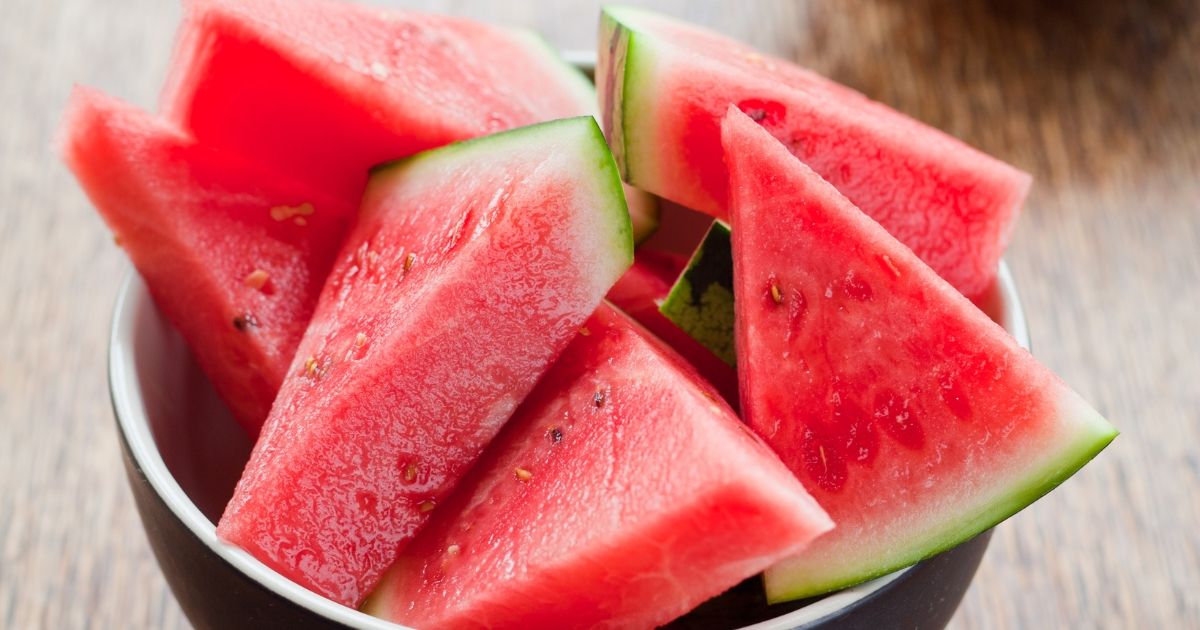The Ultimate Guide to Cutting Watermelon
Learn the secrets to slicing and dicing your watermelon perfectly every time! Dive into our comprehensive guide and make the most out of this juicy summer delight.
The watermelon, a quintessential symbol of summer, is not just a fruit; it’s an experience. Bursting with refreshing juiciness and sweetness, it's perfect for beach days, barbecues, and picnics. But before you can indulge in its deliciousness, there's the task of cutting it. While it might seem daunting given its size, with the right techniques, you can master the art effortlessly. Let’s dive into the step-by-step guide on how to cut a watermelon.
Step-By-Step: Cutting Watermelon Like a Pro
Select the Perfect Watermelon: Before you start cutting, choose a ripe watermelon. Look for one with a creamy yellow spot (this is where it rested on the ground and indicates ripeness). It should also be firm and free from bruises.
Gather Your Tools: You’ll need a sharp chef’s knife, a cutting board, and a bowl or plate to place your cut pieces.
Wash and Dry: Always wash the watermelon's surface to get rid of any dirt or residues. Dry it with a clean cloth to prevent slipping.
Cut the Ends: Place your watermelon on the cutting board and slice off both the top and bottom. This creates a stable base to cut the rest of the fruit.
Vertical Slices: Stand the watermelon upright and start making vertical cuts from top to bottom, following the shape of the fruit. This will give you large wedges.
Cube or Triangle Cuts: Lay each wedge down and make horizontal cuts to create either cubes or triangles, depending on your preference.
Enjoy! Serve the cut pieces immediately, or store them in an airtight container in the refrigerator.
Getting the Most Out of Your Watermelon
The joy of watermelon doesn't end with just its juicy flesh. The rind can be pickled or juiced, and the seeds can be roasted as a snack. So, the next time you cut a watermelon, think twice before discarding these parts. By using the whole fruit, you're not only reducing waste but also discovering new, delicious ways to enjoy this summertime favorite.
What Is The Best Way To Cut A Watermelon?
The best way to cut a watermelon depends on the occasion and how you intend to serve or consume it. Here are some popular methods:
1. For Bite-sized Cubes (Ideal for Salads or Snacking)
- Stabilize the Watermelon: Start by cutting off both the top and bottom of the watermelon. This will give you two flat surfaces and stabilize the fruit.
- Peel Off the Rind: Stand the watermelon upright on one of its flat surfaces. With a sharp knife, start from the top and slice downwards, following the curve of the fruit to remove the rind.
- Cut Vertical Slices: Lay the watermelon on its side and cut vertical slices about 1-inch thick.
- Stack and Dice: Stack 2 or 3 slices at a time, then make horizontal and vertical cuts to produce bite-sized cubes.
2. For Classic Wedges (Perfect for Picnics):
- Cut in Half: Place the watermelon on a cutting board and slice it in half horizontally.
- Quarter: Take each half and slice it in half again, giving you four quarters.
- Create Wedges: With the flesh facing up, slice each quarter into 1 or 2-inch thick wedges.
3. For Sticks (Great for Kids and Parties):
- Cut in Half: Just as you would for wedges, start by slicing the watermelon in half horizontally.
- Slice Horizontally: Take each half and make horizontal cuts, about 1-2 inches apart, ensuring you don’t cut all the way through to the rind.
- Slice Vertically: Rotate and make similar vertical cuts, creating a grid pattern.
- Break into Sticks: Simply pick up and break off the watermelon sticks, using the uncut base of the rind as a handle.
Tips for Cutting Watermelon:
- Always use a sharp knife and a stable cutting surface.
- Wash the watermelon before cutting to remove any dirt or contaminants.
- To reduce mess, use a cutting board with a groove around the perimeter; it'll catch the excess juice.
Choose the method that best suits your needs. Whichever way you choose, the aim is to enjoy the refreshing taste and texture of the watermelon!
Is It Better To Cut Watermelon Cold Or Warm?
When it comes to cutting watermelon, it's generally easier and more pleasant to cut it when it's cold. Here are a few reasons why:
Safety: A cold watermelon is firmer, providing more stability when slicing. A firmer texture reduces the risk of the knife slipping, making it safer to cut.
Taste and Texture: A chilled watermelon is more refreshing and tastes better, especially on a hot day. The cold temperature also gives the watermelon a crisper texture.
Juiciness: Cold watermelon tends to retain its juices better. When you cut a warm watermelon, you might notice more of its juice runs out, leading to potential wastage and a messier cutting process.
Shelf Life: Once cut, watermelon starts to lose its freshness. If you're cutting it after it's been refrigerated, you're starting with a fresher product, and it might have a slightly longer fridge life post-cutting compared to a watermelon that has been sitting out.
However, if the watermelon is too cold (e.g., if it's just out of a very cold refrigerator or cooler), it might be beneficial to let it sit for a few minutes to slightly come to temperature for easier cutting.
In conclusion, for safety, taste, and minimal mess, it's generally better to cut watermelon when it's cold. If you're buying a watermelon from a store or farmer's market and plan to eat it soon, consider refrigerating it for a few hours before cutting.
Why You Should Wash Watermelon Before Cutting?
Washing a watermelon before cutting it might seem unnecessary since you're not eating its rind. However, there are valid reasons for this practice:
Contamination Transfer: The knife you use to cut the watermelon can transfer contaminants from the rind to the fruit's interior. As the knife slices through, anything on the outside can be dragged into the juicy flesh. This can be especially concerning if the melon has been in contact with harmful pathogens like salmonella or E. coli.
Handling and Transport: Consider the journey a watermelon takes before it arrives at your table. It's grown in fields, handled by multiple workers, transported in trucks, and displayed in stores where numerous shoppers might handle it before you buy it. Any of these stages can introduce dirt, bacteria, or other contaminants to the watermelon's surface.
Pesticides and Chemicals: If the watermelons are not organically grown, they might have been treated with pesticides, herbicides, or other chemicals. Washing can help reduce the residue of these chemicals.
Natural Dirt and Debris: Being a ground-growing fruit, watermelons come into direct contact with soil, which can mean dirt and mud might be present on its surface.
Improved Aesthetics: A clean watermelon can prevent your cutting board and kitchen counter from getting dirty. This makes the preparation process more pleasant.
How To Wash a Watermelon?
When washing a watermelon, use cold water and a clean scrub brush or cloth to gently scrub the surface. This will help remove dirt and contaminants. You can also use a mild produce wash, but it's not necessary. Ensure you rinse the melon thoroughly and pat it dry with a clean cloth before cutting.
In conclusion, taking a few minutes to wash a watermelon can ensure that you enjoy a fresh, clean, and safe fruit, free from unnecessary contaminants. It's a small step that can make a significant difference in food safety.
A Fruit of Ancient Origin
The watermelon, with its refreshing sweetness and vibrant hues, dates back over 4,000 years to ancient Africa. Historical records show it was cultivated in the Nile Valley, with seeds even found in Pharaoh Tutankhamun's tomb. From these beginnings, the watermelon spread to Mediterranean countries via merchant ships and eventually to other parts of Europe, Asia, and the New World. It's fascinating to think that when we enjoy this fruit today, we're indulging in a treat that has quenched the thirst of people for millennia.
Cultural Significance in Celebrations
As watermelons journeyed across continents, they became integrated into various cultures and their culinary traditions. In parts of China, for instance, it's common to serve watermelon seeds during the Lunar New Year as a symbol of prosperity and abundance. In the southern United States, summer festivities are often incomplete without a fresh watermelon cut open for everyone to enjoy. This fruit, besides being a culinary delight, has transcended to be a part of celebratory rituals, making moments memorable.
Modern Variations and Culinary Experiments
Today, the love for watermelon has led to the creation of numerous recipes, transcending the traditional method of just slicing and eating. Chefs and home cooks alike experiment with watermelon salads, pairing its sweetness with feta cheese's saltiness or mint's freshness. There's also watermelon juice, smoothies, and even grilled watermelon! Such is the versatility of this ancient fruit that its culinary potential is still being explored, proving that its journey from the Nile Valley was just the beginning of a global gastronomic adventure.
Watermelon Recipes
Watermelon Pizza
Watermelon pizza brings together the juicy sweetness of ripe watermelon with pizza. This fruit pizza is a watermelon that is topped with creamy sauce and...
Watermelon Juice
As summer sets in with its warm embrace, there's nothing quite as invigorating as a glass of chilled watermelon juice. Not only does it hold the essence...






























